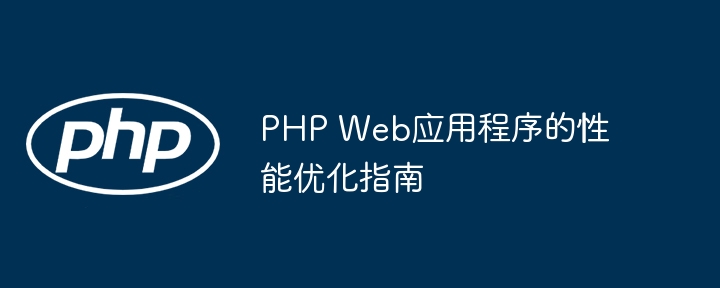
To improve the performance of your PHP web application, you can use the following optimization tips: Use object/page cache to store frequently accessed data and avoid database retrieval. Optimize database queries, choose the right database type, and reduce HTTP requests. Optimize PHP settings, use accelerators, and implement load balancing. Use performance analysis tools, enable logging, and perform load testing to monitor and optimize applications.

Performance Optimization Guide for PHP Web Applications
In today’s fast-paced digital world, website performance has become crucial Important factor. Slow loading times frustrate users, leading to lower engagement and conversion rates. This is especially true for PHP web applications since it is a popular server-side programming language. This guide will provide you with practical performance optimization tips for PHP applications, helping you improve responsiveness and provide a better experience for your users.
Caching technology
Code Optimization
Server configuration
memory_limit), Maximum execution time (max_execution_time) and other PHP settings. Real-time monitoring
Practical Case
An e-commerce application implemented object caching to store product details. This resulted in a 50% reduction in page load times as product data no longer needed to be retrieved from the database.
Conclusion
By applying these optimization tips, you can significantly improve the performance of your PHP web application. Using caching techniques, optimizing code, adjusting server configurations, and implementing real-time monitoring, you can provide your users with faster load times and a better overall experience.
The above is the detailed content of Performance Optimization Guide for PHP Web Applications. For more information, please follow other related articles on the PHP Chinese website!